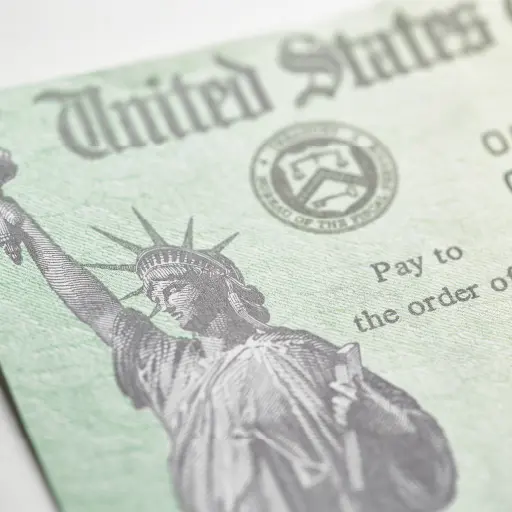
The COVID-19 pandemic brought another period of near zero interest rates in the federal funds market. While the previous period lasted over six years, there is no certainty around when these low rates will end.
Some analysts fear a significant rebound in inflation when most of the country has the vaccine. So, will the Fed need to act preemptively in the overnight markets to tame inflation or will they keep low rates until we achieve full employment?
Fed Keeps Interest Rates and Projections Steady
As expected, the Fed held overnight rates near zero at their most recent meeting, where it has been for almost a year. The Fed also committed to continue the current asset purchase program of $120 billion in Treasury securities and agency mortgage-backed securities. Although little has changed in the FOMC statement from the past few months, the projection materials provided by the Fed have been improving.
The summary of economic projections, provided quarterly, saw improved estimates for GDP and employment, including the expectations of a sharper rebound in inflation. However, the Fed is sticking to its prior predictions of near zero rates throughout the next three years, but their internal opinions may be shifting.
Compared to this time in December, three more central bankers now see rate hikes coming in 2022 and two more expect them by 2023. Also, the Fed recently refused to extend pandemic-era capital relief for banks, which may be a small first step towards less accommodative monetary policy.
Treasury Yields Creeping Up
Outside the overnight markets, some fixed income yields are nearing pre-pandemic levels. As a result, rates that use the 10-year treasury as a baseline, like mortgage rates, are starting to rise. It’s also important to note that evaluations of tech stocks are often reliant on discounted future profits, so the threat of higher interest rates can lead to lower valuations and trigger selloffs in that sector.
Despite rising bond yields, the Fed continues to support maintaining interest rates near zero until the economy has recovered to full employment. Since central bankers changed their stance on inflation last year, there have been growing fears of hyperinflation among some analysts. Their statement is a little vague, but some Fed officials seem comfortable with 2.5% inflation for at least a limited period of time.
Will more consumption over the summer lead to hyperinflation?
Overall, inflation figures have remained muted and well below the Fed’s target. But traditional inflation measures have not been as useful in measuring inflation during the pandemic due to a change in spending dynamics. The ‘average basket of goods’ used to calculate inflation before the pandemic doesn’t necessarily match the goods that were purchased during the pandemic, and old inflation measures haven’t been adjusted for such changes. For example, certain sectors like leisure and hospitality were avoided during the pandemic while others, like technology and delivery services, quickly became necessities for families working from home.
On the other hand, when vaccines reach most of the population and the country reopens, the same sort of targeted consumption may happen once again, but in the opposite sectors. So, while sizable inflation may happen in certain sectors, it could be accompanied by deflation in sectors that were overheated during the pandemic.
Could fiscal and monetary policy lead to hyperinflation?
Normally, economic stimulus is meant to supplement consumption during economic downturns to help businesses and individual consumers continue to spend. The pandemic, however, is a different type of slowdown.
In some cases, consumers are avoiding consumption which can have the same effect as being unable to spend. In addition, the CARES Act from last March saw most recipients using the stimulus payments to pay down debts and save with only 15% of recipients reporting spending it.
When are interest rates expected to rise?
Fed policy has been overly accommodative since the financial crisis in 2007, but especially so during the pandemic. In fact, the money supply has increased by over 25% since last February, and the increased growth rate sees no reason to slow. But with all this accommodative policy since 2008, inflation had often struggled to reach the 2% target, even during one of the longest expansions in U.S. history.
With the Fed acknowledging its comfort with inflation over 2% and priority given to labor market conditions, it seems unlikely to see interest rate hikes any time soon. However, the biggest threat to low interest rates could be runaway inflation, but this also seems unlikely in the near term. For those looking to predict the next interest rate move, it can be valuable to look for other signs of the Fed tightening policy, like cutting asset purchases or reducing other types of stimulus. These actions could be leading indicators that the Fed is preparing to adjust rates.
Don’t miss our interest rate and Federal Reserve updates.
To ensure you stay current on major economic and interest rate developments, follow ADM on Twitter, Facebook and LinkedIn. We provide periodic breakdowns of FOMC meetings, including expectations and reactions, so you can stay informed.
In addition, if you want to be sure your cash is 100% protected in these uncertain times, give us a call. Marketplace Banking™ by ADM ensures your company gets safety and competitive returns for your business deposits.
*American Deposit Management Co. is not an FDIC/NCUA-insured institution. FDIC/NCUA deposit coverage only protects against the failure of an FDIC/NCUA-insured depository institution.
